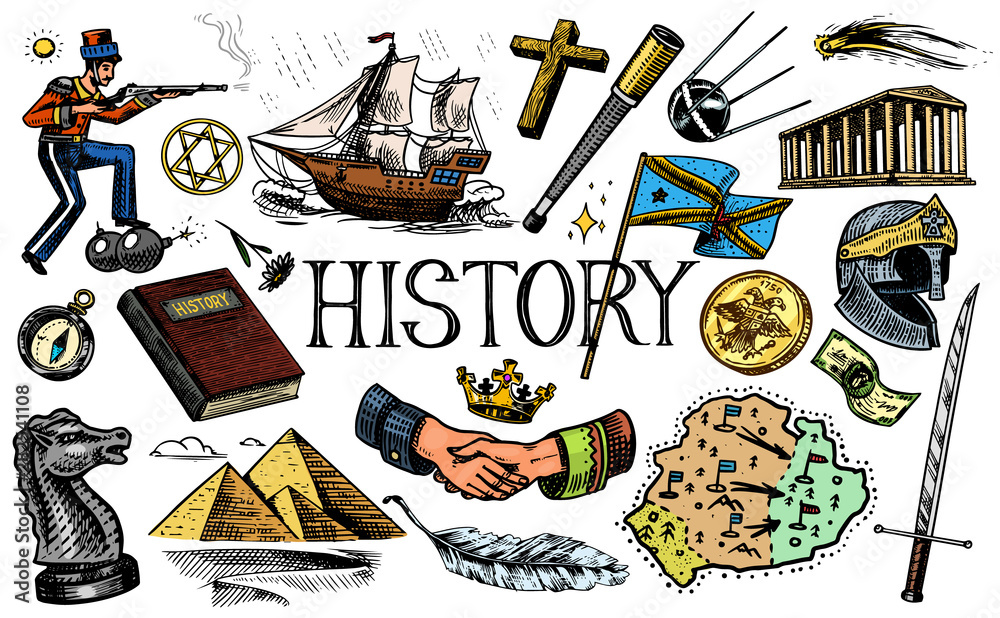Have you ever wondered about the secrets held within the grand walls of Buckingham Palace? This iconic building, a symbol of the British monarchy, holds a truly remarkable story. Its journey from a simple house to a world-famous palace is, you know, a captivating tale of transformation.
For many, it's just a picture-postcard landmark, yet its past is a rich collection of events, much like the systematic study of history itself. We can learn so much about changing times by looking at how this place has grown and changed over the centuries. Just as history provides a chronological, statistical, and cultural record of the events and people of the past, so too does this palace tell a similar story.
Understanding the history of Buckingham Palace lets us peek behind the curtains of royal life and see how the building itself reflects different eras. It's a record of events, a bit like a living archive, telling us about the people who lived there and the big moments they saw. Like the untold stories of human history revealed by archaeological discoveries, the palace’s story helps us explore the lived experiences and traditions of diverse cultures and identities within the royal family.
Table of Contents
- From Humble Beginnings: Buckingham House
- George III and the Queen's House
- Queen Victoria and the Palace Transformation
- Twentieth-Century Changes and Modern Life
- Buckingham Palace Today: A Working Royal Residence
- Frequently Asked Questions About Buckingham Palace
- Conclusion
From Humble Beginnings: Buckingham House
The story of Buckingham Palace actually begins a long way back, in the early 17th century. The land where it stands today was once a mulberry garden, planted by King James I. He hoped to encourage silk production in England, but the wrong type of mulberry tree was used, so the project never really took off. It was, quite honestly, a bit of a royal gardening mishap.
Later, a very prominent figure named John Sheffield, who was the Duke of Buckingham, decided to build a large house on this spot. This was in 1703, and he gave it the name Buckingham House. It was a very grand private residence, very much a sign of wealth and social standing at the time. This was, you know, a really significant private estate.
The building itself was made of red brick and followed a classical design. It faced St. James's Park, offering lovely views. For a considerable period, it remained simply a private home, not yet connected to the monarchy in any official capacity. Its early days were, in a way, quite different from what it eventually became, a symbol of a nation.
The Duke’s vision for his home was one of elegance and comfort, a place for entertaining and living a life of distinction. He wanted a residence that reflected his position in society, and in that, he certainly succeeded. The building stood as a testament to his personal taste and influence, a place of private gatherings and quiet moments, far removed from the public eye of a royal court.
This early structure laid the physical groundwork for what would later become a world-renowned landmark. It had good bones, you could say, a strong foundation upon which centuries of history would be layered. The land itself had seen various owners and purposes before the Duke’s grand house took shape, and its history was already, apparently, quite varied.
George III and the Queen's House
The royal connection started to form in 1761. King George III decided to purchase Buckingham House for his wife, Queen Charlotte. It was intended to be a private family home, a place where their many children could grow up away from the more formal and public court life that happened at St. James's Palace. This was, in a way, a desire for a simpler family setting.
Because Queen Charlotte used it so frequently, the house became widely known as "The Queen's House." It served as a setting for intimate family gatherings, and it was also where many of their children were born. It was not yet the official working palace we recognize today, but rather a more personal space for the royal couple. This marked a really significant step in its journey towards royal status.
The King and Queen valued the sense of privacy and quiet that the house offered them. They spent a considerable amount of their time there, finding it a pleasant escape from their public duties. It was, basically, a comfortable retreat for the royal couple and their growing family, a contrast to the demands of state affairs. This period saw the house become very much a family dwelling.
The purchase of the house showed a shift in royal preferences, moving towards a more secluded family life. The King wanted a place where his family could enjoy some normalcy, away from the constant scrutiny of the court. This decision, in fact, shaped the early royal character of the building, giving it a softer, more domestic feel than its later grand transformation.
The building, during this time, was still quite different from its current appearance. It was a large, elegant house, certainly, but it lacked the sheer scale and public function it would later acquire. It was a home, first and foremost, a place where royal children played and grew up, very much a private world within the city.
Queen Victoria and the Palace Transformation
The biggest transformation of the building took place when Queen Victoria ascended to the throne in 1837. She made the decision that Buckingham House, which had already seen some expansions, would become her official London residence. This was a truly monumental moment for the building, effectively turning it into Buckingham Palace as we know it.
Before Victoria moved in, a very skilled architect named John Nash had already started big changes for King George IV. He added three new wings, shaping the building around a central courtyard. This work was, so, a huge undertaking, and the money spent on these changes was, apparently, a very large amount. This led to quite a bit of public discussion, with some people feeling that too much was being spent on a royal home. Yet, the vision for a truly grand palace was already taking shape.
However, the palace was still not quite ready for a young queen. It lacked some basic comforts and conveniences, meaning more work was definitely needed. This period really saw the building grow into its current impressive size and shape, a truly massive construction effort. The palace needed to be fit for a monarch, a proper seat of power.
Under Queen Victoria's reign, the famous East Front, which faces The Mall, was added. This addition was necessary because the growing royal family needed more space, and they also wanted a balcony from which to make public appearances. This significant addition, completed in 1850, gave the palace its familiar facade, the one that is very easily recognized today. It changed the public face of the building completely.
The addition of the East Front, where the famous balcony is, completely changed the palace's public face. It became the stage for national celebrations and moments of joy, a place where the monarch could connect with her people. This transformation was, you know, a pivotal part of its story, making it a true public symbol.
The palace became a very active hub of court life, hosting grand balls, state banquets, and official receptions. It was during Victoria's



Detail Author:
- Name : Zelda Jakubowski V
- Username : name33
- Email : luettgen.gisselle@hotmail.com
- Birthdate : 1979-09-09
- Address : 7240 Torp Lights Addieshire, AL 81001-2868
- Phone : +1.573.646.2614
- Company : Leffler PLC
- Job : Director Of Business Development
- Bio : Consequatur aut error sint aliquam ducimus omnis voluptatem voluptas. Voluptatem minima quia natus non ullam qui sed. Dolore voluptatem optio et. Assumenda sunt dolor nisi reiciendis neque molestiae.
Socials
tiktok:
- url : https://tiktok.com/@darlene1610
- username : darlene1610
- bio : Ratione veniam totam velit ut. Provident quas pariatur molestiae et repellat.
- followers : 5690
- following : 2518
linkedin:
- url : https://linkedin.com/in/swift1978
- username : swift1978
- bio : Nihil ipsum aut aperiam dicta eum.
- followers : 2185
- following : 1832